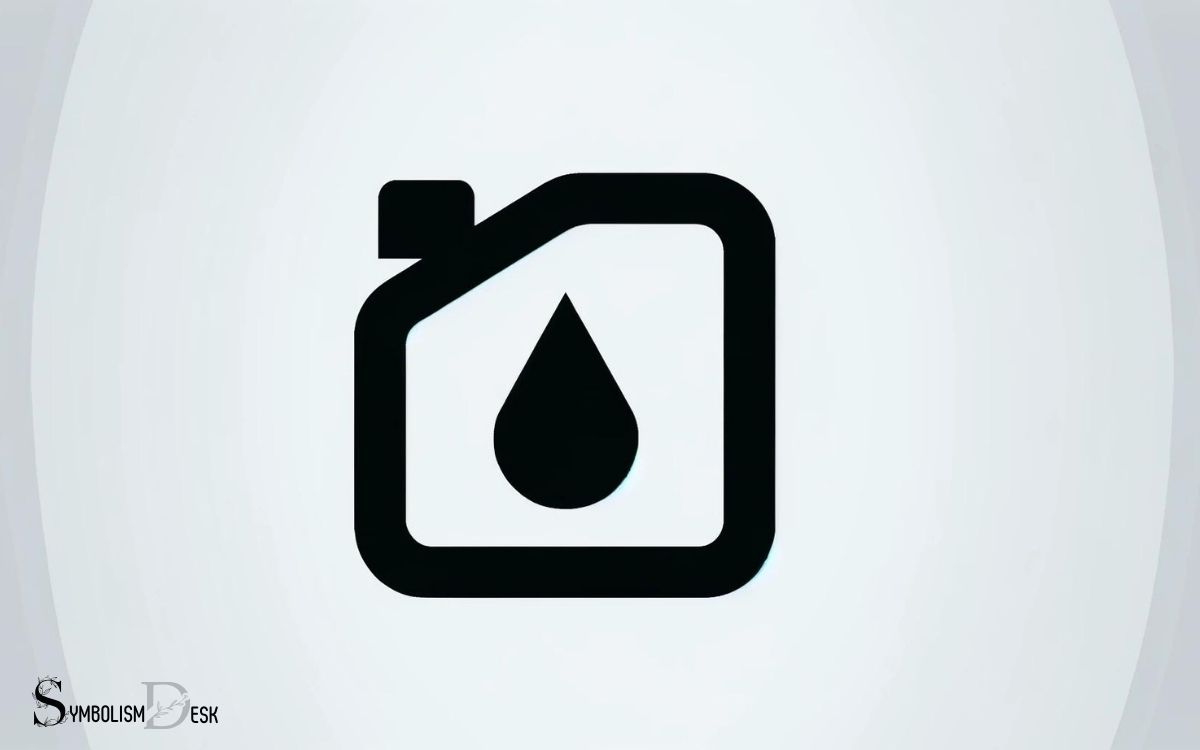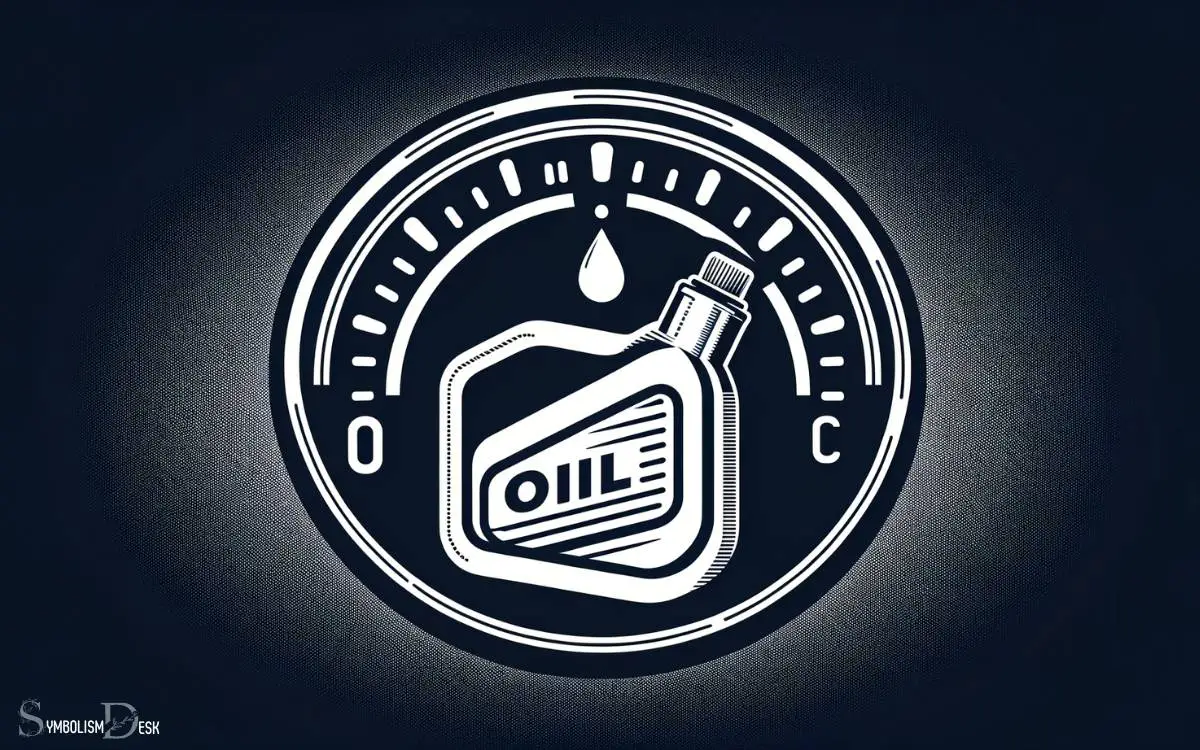Symbol for Oil Change in Car: small icon!
The symbol for an oil change in a car is typically represented by a small oil can icon. This icon may appear on the dashboard or within the vehicle’s information display to indicate that the car is due for an oil change.
When you see this icon light up, it’s a reminder to schedule an oil change to maintain your engine’s health and performance. Ignoring this warning can lead to decreased engine performance, higher fuel consumption, and potentially costly repairs in the future.
Car manufacturers often set recommended oil change intervals, which can be found in the vehicle’s owner manual.
Common symbols related to oil changes include:
- An oil can icon, which is the universal symbol for oil and lubrication services.
- A text message stating “Change Engine Oil” or similar wording.
- A maintenance reminder light, which could be a general warning or a specific notification for oil service.

Key Takeaway
Meaning of the Oil Change Symbol

The oil change symbol on a car’s dashboard indicates when the vehicle’s engine oil needs to be replaced. When this symbol lights up, it’s a reminder for the driver to schedule an oil change. Typically, this reminder is based on mileage or the car’s internal clock. Neglecting regular oil changes can lead to engine wear and decreased performance over time, so it’s important not to ignore the warning. Similarly, other dashboard indicators, such as the windshield washer fluid warning, alert drivers to issues requiring attention to maintain the vehicle’s functionality. Being proactive about these alerts ensures a smoother and safer driving experience.
Ignoring this warning can lead to decreased engine performance and potential long-term damage. It’s crucial to adhere to the recommended oil change schedule provided in the car’s manual.
Regular oil changes help to maintain the engine’s lubrication, prevent overheating, and ensure optimal performance.
By understanding and acting on the oil change symbol, car owners can prolong the life of their engines and avoid costly repairs.
Importance of Addressing the Symbol

Addressing the oil change symbol is crucial as it prevents potential engine damage and ensures the longevity of the vehicle. Ignoring the symbol can lead to costly repairs and decreased performance, making it essential to address it in a timely manner.
By staying on top of oil changes, car owners can maintain the overall health and efficiency of their vehicle.
Prevents Engine Damage
Regular oil changes prevent engine damage. Oil lubricates and cleans the engine, preventing the buildup of dirt and debris that can cause wear and tear. This is crucial for maintaining optimal engine performance and preventing costly repairs.
Over time, oil breaks down and becomes less effective, leading to increased friction and heat within the engine. This can result in damage to critical engine components, such as the pistons, camshaft, and bearings.
Addressing the oil change symbol promptly ensures that the engine is consistently supplied with clean, high-quality oil, reducing the risk of engine damage and extending the lifespan of the vehicle.
By preventing engine damage, regular oil changes play a vital role in ensuring the longevity of the vehicle.
Ensures Vehicle Longevity
Proper maintenance of the oil change symbol is essential for maximizing vehicle longevity and performance. Addressing the symbol ensures that the vehicle’s engine continues to operate efficiently, reducing the risk of major mechanical issues.
Here are five reasons why addressing the oil change symbol is crucial for vehicle longevity:
- Prevents engine wear and tear
- Maintains proper lubrication for engine components
- Helps to keep the engine clean and free from deposits
- Improves fuel efficiency and overall performance
- Reduces the risk of costly repairs and breakdowns
Frequency of Oil Changes

Most car manufacturers recommend changing the oil every 3,000 to 5,000 miles. However, the frequency of oil changes can vary depending on the vehicle’s make, model, and age.
Modern vehicles and synthetic oils can often go longer between oil changes, with some manufacturers suggesting intervals of 7,500 to 10,000 miles. It’s important to consult the owner’s manual for the specific recommendations for your car.
Additionally, factors such as driving in severe conditions, towing heavy loads, or frequent stop-and-go driving may warrant more frequent oil changes.
Regular oil changes are crucial for maintaining the health of the engine and ensuring optimal performance. By adhering to the manufacturer’s recommended oil change intervals, car owners can help prolong the life of their vehicle’s engine and avoid costly repairs.
Consequences of Neglecting Oil Changes

Neglecting oil changes in a vehicle can lead to serious engine damage, potentially resulting in costly repairs. Consequently, failing to adhere to the recommended oil change intervals can significantly impact the engine’s performance and longevity.
The consequences of neglecting oil changes include:
- Increased friction and wear on engine components
- Build-up of sludge and debris in the engine
- Reduced fuel efficiency
- Overheating and potential engine failure
- Invalidating the vehicle’s warranty
Regular oil changes are essential for maintaining the health of a car’s engine. By following the manufacturer’s recommended oil change schedule, car owners can avoid these detrimental consequences and ensure their vehicle operates at its best for years to come.
How to Reset the Oil Change Indicator

When a car’s oil change indicator light comes on, it’s important to know how to reset it. This ensures that the next oil change reminder will be accurate.
The process usually involves accessing the car’s menu and selecting the option to reset the oil change indicator.
Resetting Oil Change Light
To reset the oil change light, the driver should follow the specific procedure outlined in the vehicle’s manual. This typically involves a series of steps to be performed within a certain timeframe or using the car’s dashboard controls.
Here are some general steps to reset the oil change indicator:
- Locate the vehicle’s manual to find the exact procedure for resetting the oil change light.
- Start the car and ensure the oil change light is illuminated on the dashboard.
- Follow the specific steps outlined in the manual, which may involve pressing certain buttons or combinations in a particular sequence.
- Wait for the indicator light to flash or turn off, confirming that the reset was successful.
- Turn off the car and restart it to ensure the oil change light stays off.
Following these steps should help the driver reset the oil change light effectively.
Car Oil Change Symbol
Resetting the oil change indicator is a crucial step in maintaining a car’s optimal performance and engine health.
To reset the oil change indicator, follow the specific steps outlined in the car’s manual or use the general steps below:
| Steps to Reset Oil Change Indicator | Instructions |
|---|---|
| Step 1 | Insert the key into the ignition and turn it to the “on” position without starting the engine. |
| Step 2 | Locate the “reset” button on the dashboard and hold it down until the oil change light blinks or turns off. |
| Step 3 | Start the car to ensure the oil change indicator has been successfully reset. |
Successfully resetting the oil change indicator ensures that the car’s maintenance schedule is accurately reflected, promoting the vehicle’s longevity and performance. The subsequent section will discuss the process of clearing the oil change message.
Clearing Oil Change Message
The process for clearing the oil change message involves resetting the oil change indicator in the car.
To reset the oil change indicator, follow these steps:
- Start by turning the ignition to the “on” position without starting the engine.
- Locate the “reset” button or the trip button on the dashboard.
- Press and hold the “reset” or trip button for about 10 seconds until the oil change indicator starts flashing or the display shows the reset message.
- Release the button and start the engine. If the oil change indicator is no longer displayed, the reset was successful.
- If the indicator is still present, repeat the process or consult the car’s manual for specific instructions.
Following these steps should help in resetting the oil change indicator in the car.
Signs of Potential Engine Damage

When noticing signs of potential engine damage, car owners should promptly address any unusual noises, vibrations, or warning lights. Ignoring these signs can lead to more severe issues and costly repairs.
Here are some common signs of potential engine damage to watch out for:
- Check engine light illuminating on the dashboard
- Knocking or pinging noises coming from the engine
- Excessive exhaust smoke, especially if it’s blue or black
- Engine stalling or misfiring
- Loss of power or decreased fuel efficiency
Addressing these signs promptly can help prevent further damage to the engine and ensure the vehicle continues to run smoothly. Regular maintenance and addressing issues promptly can extend the life of the engine and prevent costly repairs.
Conclusion
The oil change symbol in a car is a crucial reminder to maintain the health of the engine. Did you know that 22% of car owners admit to not knowing how often they should change their oil?
It’s important to address the symbol promptly, as neglecting oil changes can lead to costly engine damage. Whether you opt for a DIY oil change or professional service, regular maintenance is key to keeping your car running smoothly.






